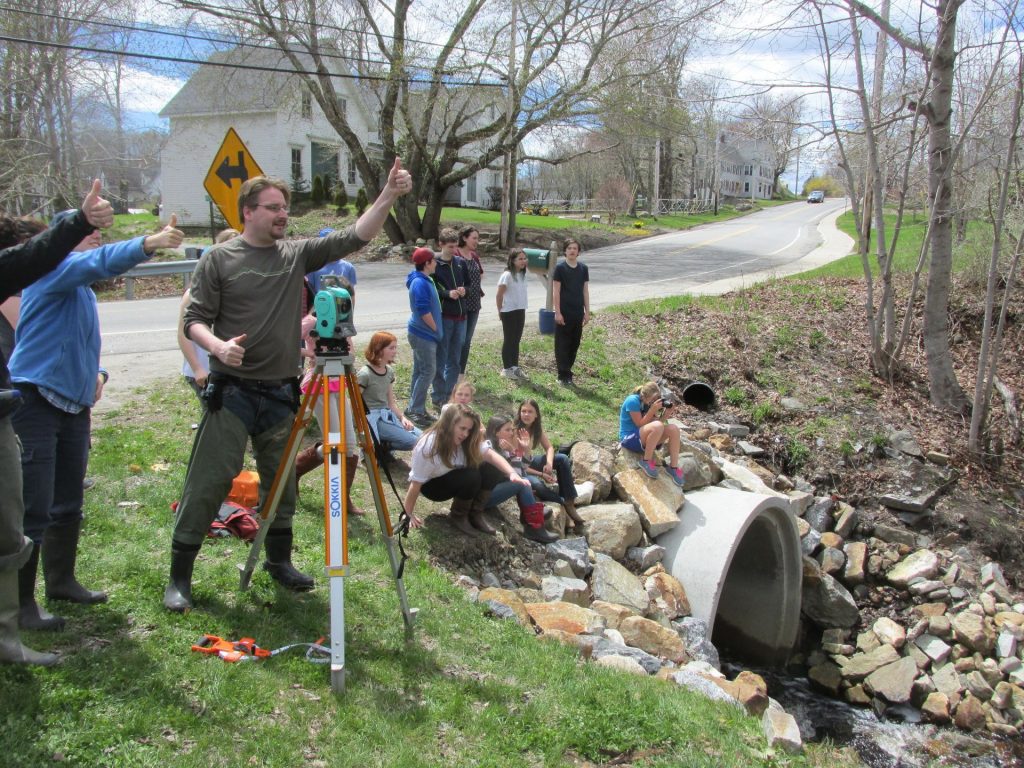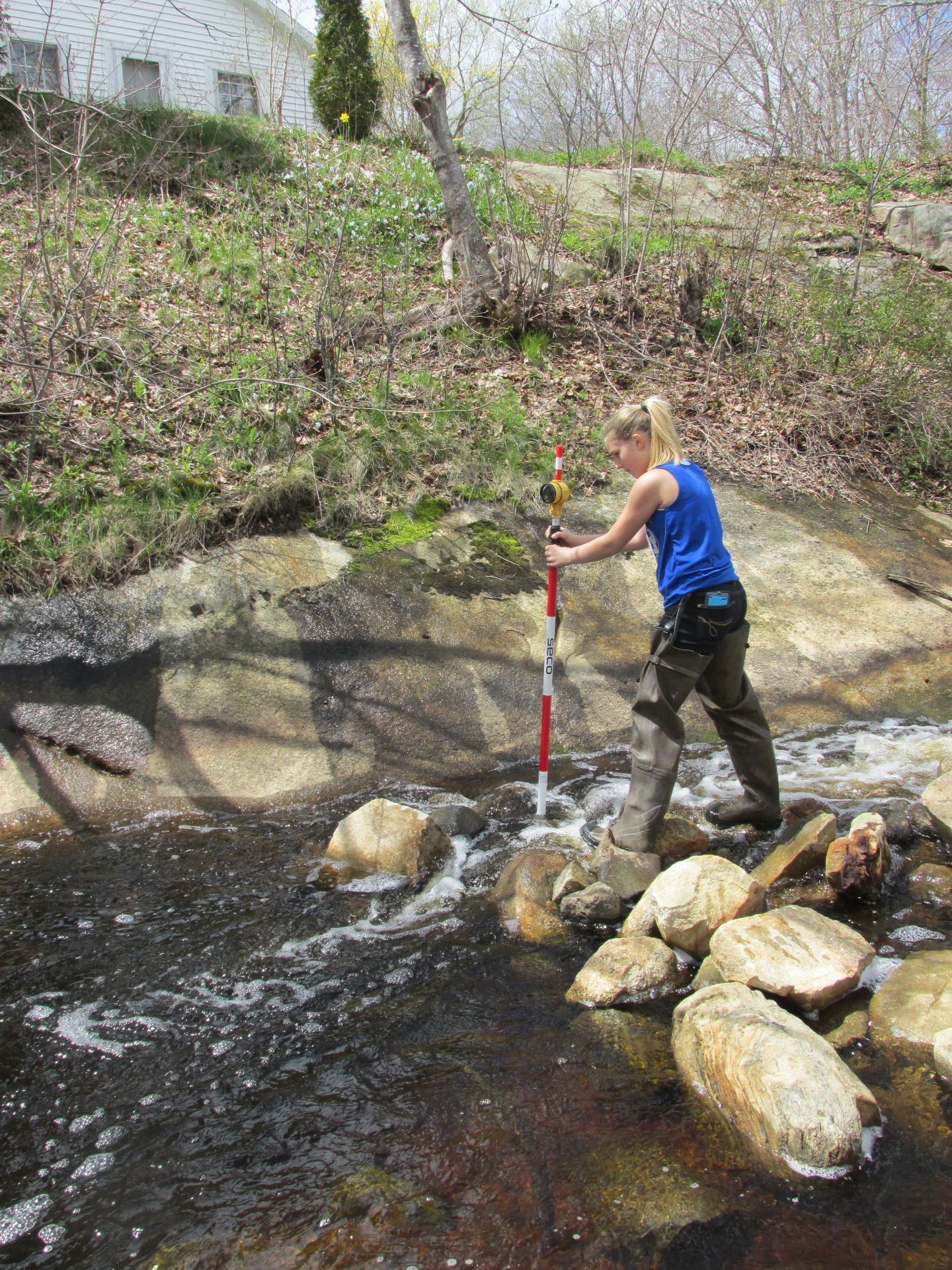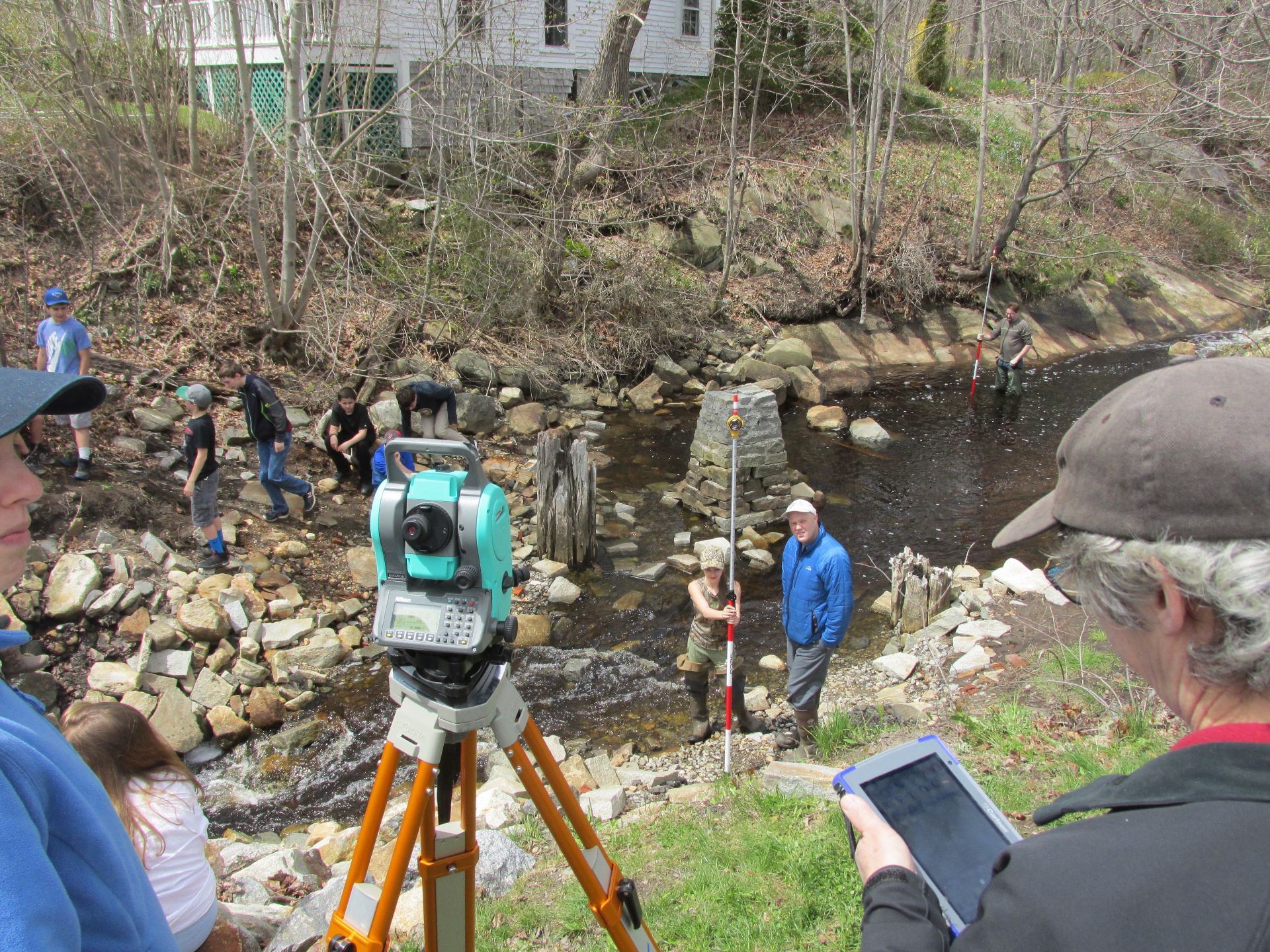
“On Wednesday, May 3rd, my class talked with and listened to Lyle Morris who spoke about elvers and alewives. The first thing he spoke about was elvers. Lyle said elvers don’t eat anything while small but as they get older they start to eat small things in the Marsh. Elvers are mostly eaten by fish and birds by the Marsh. One pound of levers cost $1300 but it’s hard to get a license. Elvers mostly die after going to spawn.” Contributed by Ella
“Elvers (American Eels) are mainly caught and sold as babies. They do this so the people that buy them can feed and raise them the way they want them. Elvers live nine to eleven years and grow up to be two to three and a half feet long. When elvers are born, they have no mouth or gills. They breathe through their skin. When they are young they are called glass eels. This is because they are see through.” Contributed by Sophia
“Your elvering limit depends on your historic landings. Maine has one of the best elver runs on the Eastern seaboard. Adult elvers lay their eggs in the ocean near Cuba. When they hatch they are called glass eels. When they are just born they have no mouths or gills, so they breathe through their skin. On their journey in the Gulf Stream they go through metamorphosis so they then grow a mouth and a gill.” Contributed by Willow
“I learned that elvers make us lots of money. One pound of elvers is about a large hand full of the small, glass-like eels. One pound of elvers is worth about $1300. In the Sargasso Sea, the elvers are born. The eggs float up in the currents and rivers to fresh water. The elvers are hatched in the ocean from their eggs. When they are nine years old, they swim back down to the Sargasso Sea where they mate and reproduce. Then, the whole cycle restarts.” Contributed by Jack

“Elvers are baby eels. At first, they are small and are known as glass eels because they are clear. They have small black eyes. But they do not stay in this life stage for long, and so soon they will turn a brownish color but stay small until adulthood. Elvers are tough, but delicate. Elver eggs start their lives in the Sargasso Sea, and the current carries them to the Marsh. The baby elvers live in the marsh until they are old enough to breed. Then, they swim out of the Marsh to the Sargasso Sea and they lay their eggs. Elvers help the Marsh. They are food for fish and so they help sustain the Marsh’s ecosystem.” Contributed by Addie
“I learned that the average lifespan of an elver is nine to eleven. The adult elvers are about two or three feet and the kids are two inches. They lay their eggs in the Bermuda Triangle and the babies find their way back. Elvers are good money. Elver season starts March 27 and stops June 7th.” Contributed by James
“It takes three days to send elvers to Asia. It takes 2,000 elvers to make one pound. Females get to five feet if they are in good shape and have good food. Three feet big is how the average male is. Maine and South Carolina are the only states fishing for elvers. They only run at night and are harvested when the sea is going out. Their life span is nine to eleven years. You get $1300 a pound. Elver season starts March 22-June 7. You have to be fifteen in order to catch elvers. They lay their eggs in the Bermuda Triangle.” Contributed by Taylor.
“Yesterday I learned about elvers, that they only run on the coming tide and at night. For every elver you catch you get 50 cents. If you catch elvers you have your own quota. Elvers lay their eggs in the Sargasso Sea then when the eggs hatch they float up the current then come to the Marsh and live there until they’re ready to go back to the Sargasso and lay their eggs. Elvers usually live nine to eleven years, because when elvers lay their eggs they usually die, but some survive and lay eggs twice. The fishing season for elvers is from March 22-June 7.” Contributed by Mya
“I remember elvers only live around nine to eleven years. Elvers help the Marsh because they are food for fish. Elvers when they are born float in the Gulf Stream until they smell freshwater and go to it and start growing. Elvers in a pound cost about $1000-$1300 dollars. When elvers are born they don’t have a mouth or gills. The elvers come from salt water and go to fresh water because they need it to grow. Elvers are known as glass eels.” Contributed by Shaun
“Elvers are baby eels. They are fished commercially in Maine and South Carolina. The lifespan for an eel is nine to eleven years. Adult eels lay their eggs around the Bermuda Triangle. Adults die not long after this. Elvers ride the Gulf Stream up north, then search for fresh water. This is when the elvers swim into the nets. Elver season is from March 22nd – June 7th. One pound of elvers equals $1300. An adult eels is about three to five feet, and a baby eel is one to two inches.” Contributed by Lute

“I learned that elvers’ life span is nine to eleven years. They also grow to be two feet or more. Lyle said the price of elvers per pound is $1300. Alewives are used as lobster bait. Lyle also said one of the elvers is worth fifty cents. When elvers are born they have no mouth or gills. It takes time to develop them. You have to have a license to fish them. You have to be a certain age to fish elvers but when alewives were caught you could be any age.” Contributed by Zeke
Here’s what students noted about alewives:
“What I learned about alewives is that when they go or live in the ocean people don’t know where they live. I also learned that if they were born in the Marsh, they come back when they are older. Alewives are still being fished in Warren on the St. George River. It’s the best run for the fishermen who fish them. Alewives are good bait for fishermen because they are fresh and they smell good to the lobsters.” Contributed by Leah
“Lyle Morris says the best run for alewives is in Warren Maine, in the St. George River. Alewives are a type of fish that live in salt water and breed in fresh water. The adult alewives will only lay their eggs where they were born. But the alewives that wanted to come to the Marsh to breed couldn’t make it into the culvert that they put in during the 1970’s. The fish couldn’t breed, but people were also overfishing them on the ocean side. They were fishing for the last adults coming to breed in the Marsh. In the 1980’s all the alewives in the Marsh were gone. They replaced the culvert, and put new laws on fishing the alewives, and in 2016 the first alewife was found in the Marsh in over thirty years.” Contributed by Lydia












